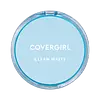What's inside
What's inside
 Key Ingredients
Key Ingredients

 Benefits
Benefits

 Concerns
Concerns

 Ingredients Side-by-side
Ingredients Side-by-side

Talc
AbrasiveMagnesium Stearate
Cosmetic ColorantMica
Cosmetic ColorantPolyethylene
AbrasivePetrolatum
EmollientPhenyl Trimethicone
Skin ConditioningDimethicone
EmollientPolybutene
Isostearyl Neopentanoate
EmollientEthylhexyl Methoxycinnamate
UV AbsorberTocopheryl Acetate
AntioxidantMethylparaben
PreservativeCocos Nucifera Oil
MaskingParaffinum Liquidum
EmollientPropylparaben
PreservativeParfum
MaskingAloe Barbadensis Leaf Extract
EmollientBenzyl Salicylate
PerfumingCitronellol
PerfumingHexyl Cinnamal
PerfumingLinalool
PerfumingBHT
AntioxidantIron Oxides
CI 77891
Cosmetic ColorantTalc, Magnesium Stearate, Mica, Polyethylene, Petrolatum, Phenyl Trimethicone, Dimethicone, Polybutene, Isostearyl Neopentanoate, Ethylhexyl Methoxycinnamate, Tocopheryl Acetate, Methylparaben, Cocos Nucifera Oil, Paraffinum Liquidum, Propylparaben, Parfum, Aloe Barbadensis Leaf Extract, Benzyl Salicylate, Citronellol, Hexyl Cinnamal, Linalool, BHT, Iron Oxides, CI 77891
Talc
AbrasiveOctyldodecyl Stearoyl Stearate
EmollientZinc Stearate
Cosmetic ColorantPolyethylene
AbrasiveAvena Sativa Kernel Flour
AbrasiveMica
Cosmetic ColorantCalcium Silicate
AbsorbentDimethicone
EmollientQuaternium-15
PreservativeDextrin
AbsorbentLauroyl Lysine
Skin ConditioningSodium Dehydroacetate
PreservativePropylparaben
PreservativeMethylparaben
PreservativeBHT
AntioxidantIron Oxides
Ultramarines
 Reviews
Reviews

Ingredients Explained
These ingredients are found in both products.
Ingredients higher up in an ingredient list are typically present in a larger amount.
BHT is a synthetic antioxidant and preservative.
As an antioxidant, it helps your body fight off free-radicals. Free-radicals are molecules that may damage your skin cells.
As a preservative, it is used to stabilize products and prevent them from degrading. Specifically, BHT prevents degradation from oxidation.
The concerns related to BHT come from oral studies; this ingredient is currently allowed for use by both the FDA and EU.
However, it was recently restricted for use in the UK as of April 2024.
Learn more about BHTDimethicone is a type of synthetic silicone created from natural materials such as quartz.
What it does:
Dimethicone comes in different viscosities:
Depending on the viscosity, dimethicone has different properties.
Ingredients lists don't always show which type is used, so we recommend reaching out to the brand if you have questions about the viscosity.
This ingredient is unlikely to cause irritation because it does not get absorbed into skin. However, people with silicone allergies should be careful about using this ingredient.
Note: Dimethicone may contribute to pilling. This is because it is not oil or water soluble, so pilling may occur when layered with products. When mixed with heavy oils in a formula, the outcome is also quite greasy.
Learn more about DimethiconeMethylparaben is a preservative and is a paraben. It is used to prevent the growth of fungus, mold, and other harmful bacteria. Parabens are chemicals used as preservatives in both cosmetics and food.
Methylparaben can be synthetically created. It can also be found naturally in some fruits, such as blueberries.
Oftentimes, Methylparaben is combined with other parabens to help increase the shelf life.
The safety of Methylparaben is currently being studied. While ongoing studies are looking into the safety of parabens, the results have been very mixed. Some studies have not found Methylparaben to be harmful.
Learn more about MethylparabenMica is a naturally occurring mineral used to add shimmer and color in cosmetics. It can also help improve the texture of a product or give it an opaque, white/silver color.
Serecite is the name for very fine but ragged grains of mica.
This ingredient is often coated with metal oxides like titanium dioxide. Trace amounts of heavy metals may be found in mica, but these metals are not harmful in our personal products.
Mica has been used since prehistoric times throughout the world. Ancient Egyptian, Indian, Greek, Roman, Aztec, and Chinese civilizations have used mica.
Learn more about MicaPolyethylene is a synthetic ingredient that helps the skin retain moisture. It is a polymer.
It is also typically used within product formulations to help bind solid ingredients together and thicken oil-based ingredients. When added to balms and emulsions, it helps increase the melting point temperature.
Propylparaben is a preservative and is a paraben with antifungal and antimicrobial properties.
This ingredient can be naturally found in plants and insects, but most of it is synthetically manufactured for human use. In cosmetics, it is usually created by reacting para-aminobenzoic acid and propanol (an alcohol).
You can usually find this ingredient in water-based products.
Parabens have come under controversy due to the claim they are hormone disruptors. Studies show conflicting results. We recommend speaking with a professional if you have any concerns.
Propylparaben is commonly found in food, medicine, and cosmetics.
Learn more about PropylparabenTalc is a clay mineral. It helps absorb moisture and improve the texture of products. Like other types of clay, Talc can have a slight exfoliating effect on skin. Talc can be added to increase the volume of products.
Some Baby powders are made by combining talc with corn starch. The word "talc" comes from Latin and originates from Arabic. Talc is a mineral commonly found throughout the world.
If you have any concerns about using talc, we recommend checking out the FDA's official page.
Learn more about TalcThis ingredient is a combination of red, black, and yellow iron oxide pigments. This combination of colors is usually found in foundation, because it results in a "skin" color.